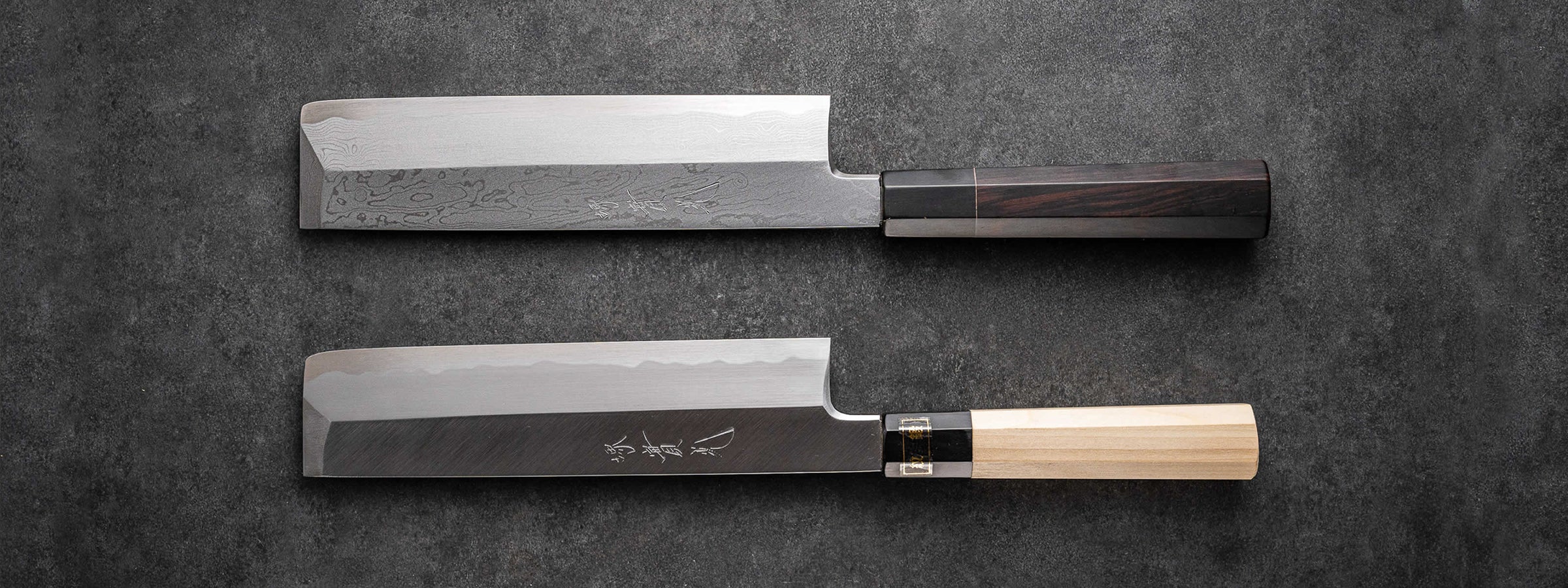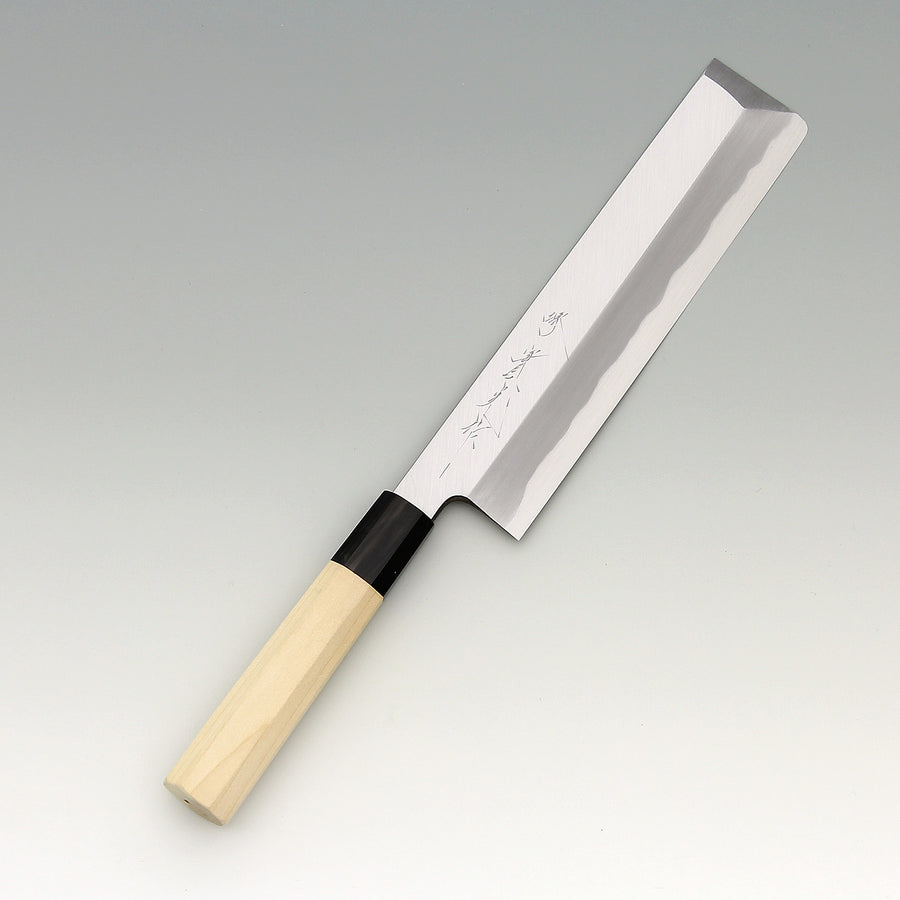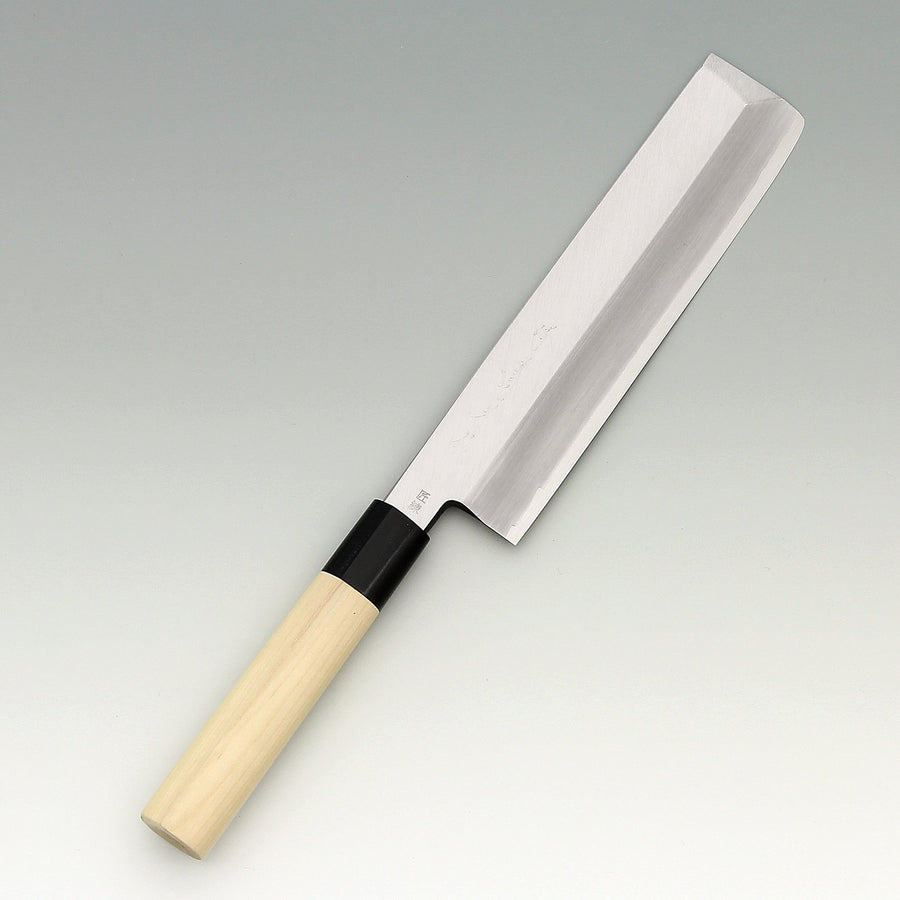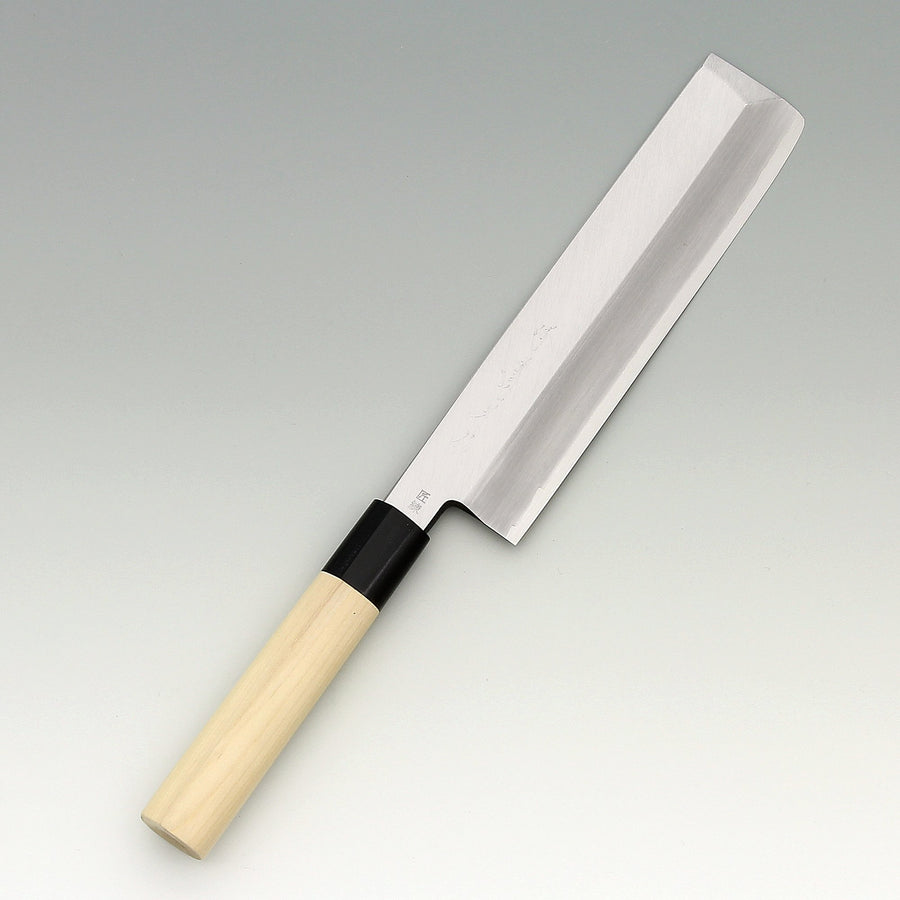The Usuba knife is a traditional Japanese single-bevel vegetable knife designed for precise and delicate cuts. Its straight, thin blade allows for clean and accurate slicing.

Usuba knives are Japanese knives designed primarily for cutting vegetables, and are suitable for delicate work.
Because they are single-edged, they are sharp and produce precise cuts. Usuba knives are essential when peeling and slicing daikon radishes, which are essential in Japanese cuisine. Kanto-style knives have a square tip (Usuba), while Kansai-style knives have a rounded tip (Kamausuba ).
This is a list of Usuba knives that can be purchased online from Jikko Hamono, a Sakai JIKKO cutlery with over 120 years of history.
Frequently Asked Questions
Features and Uses of Usuba Knives
Usuba knives are ideal for intricate vegetable cuts, such as Katsuramuki (rotary peeling), julienne slicing, and decorative cutting techniques.
The Usuba knife has a single bevel, making it ideal for professional-grade precision cutting. The Nakiri knife, in contrast, has a double bevel and is more beginner-friendly for home use.
Yes, left-handed Usuba knives are available. Be sure to check the bevel direction before purchasing.
Choosing the Right Usuba Knife
The most common sizes range from 165mm to 180mm. Choose based on your hand size and preferred cutting techniques.
Carbon steel provides superior sharpness but requires maintenance, while stainless steel is rust-resistant and easier to care for.
Traditional wooden handles offer a comfortable grip, while resin handles provide durability and low maintenance.
A stainless steel Usuba knife with a 165mm blade is recommended for beginners due to its ease of maintenance.
Using and Maintaining an Usuba Knife
The primary technique involves a straight-down push cut rather than a rocking motion. Its flat edge allows for precise and uniform cuts.
Wash and dry immediately after use. If the knife is carbon steel, apply a thin coat of oil to prevent rust. Store it in a dry place.
Since it has a single bevel, use a whetstone to sharpen at a consistent angle. Regular sharpening ensures precision cutting.
Avoid cutting hard ingredients like bones. Use a wooden or soft plastic cutting board to protect the blade.
Alternative and Complementary Knives
A Nakiri or Santoku knife can serve as substitutes, but the Usuba is designed for advanced vegetable preparation and precision cuts.
A Gyuto or Sujihiki knife is an excellent companion, covering meat and fish cutting tasks alongside an Usuba for vegetables.




